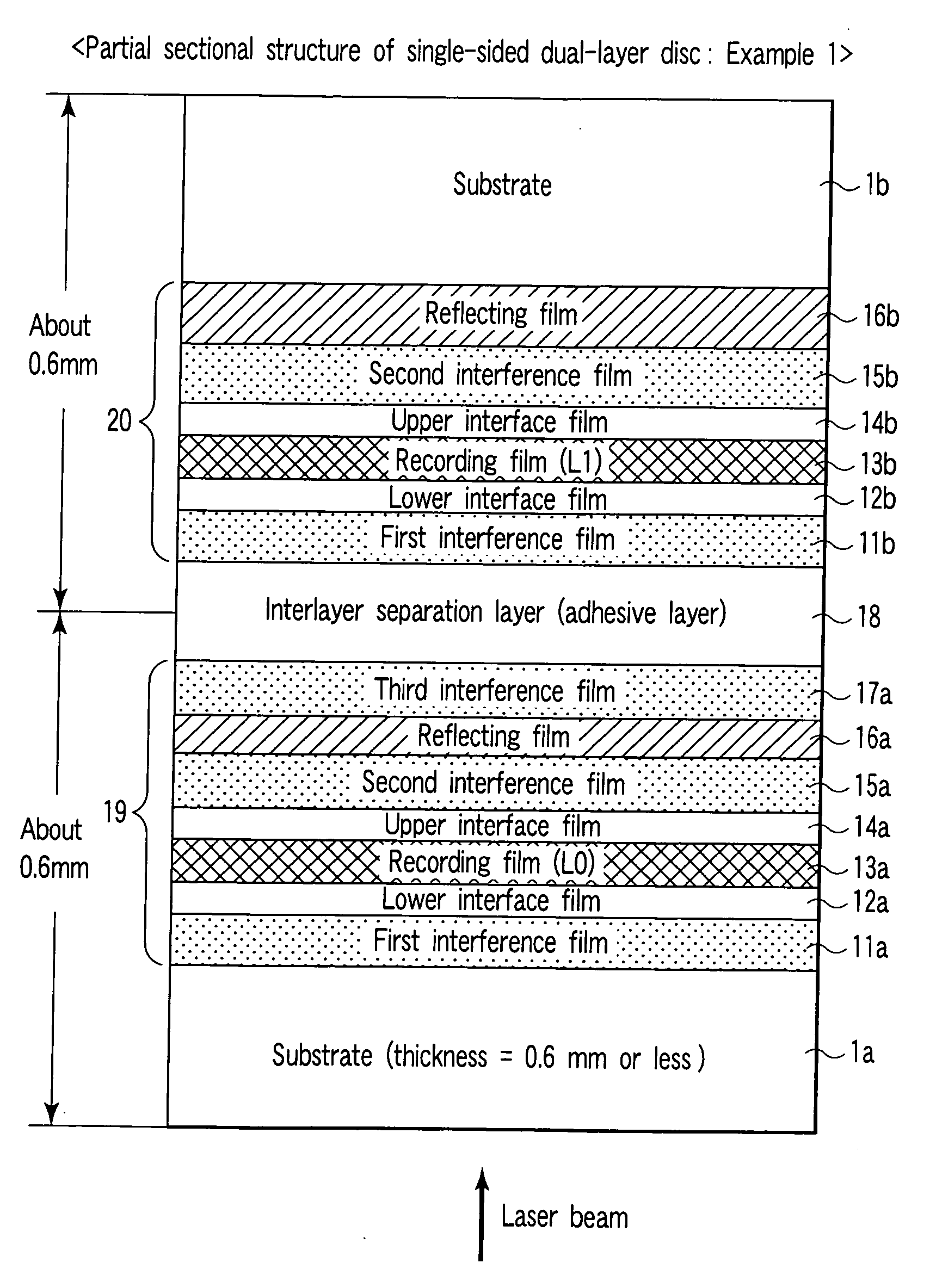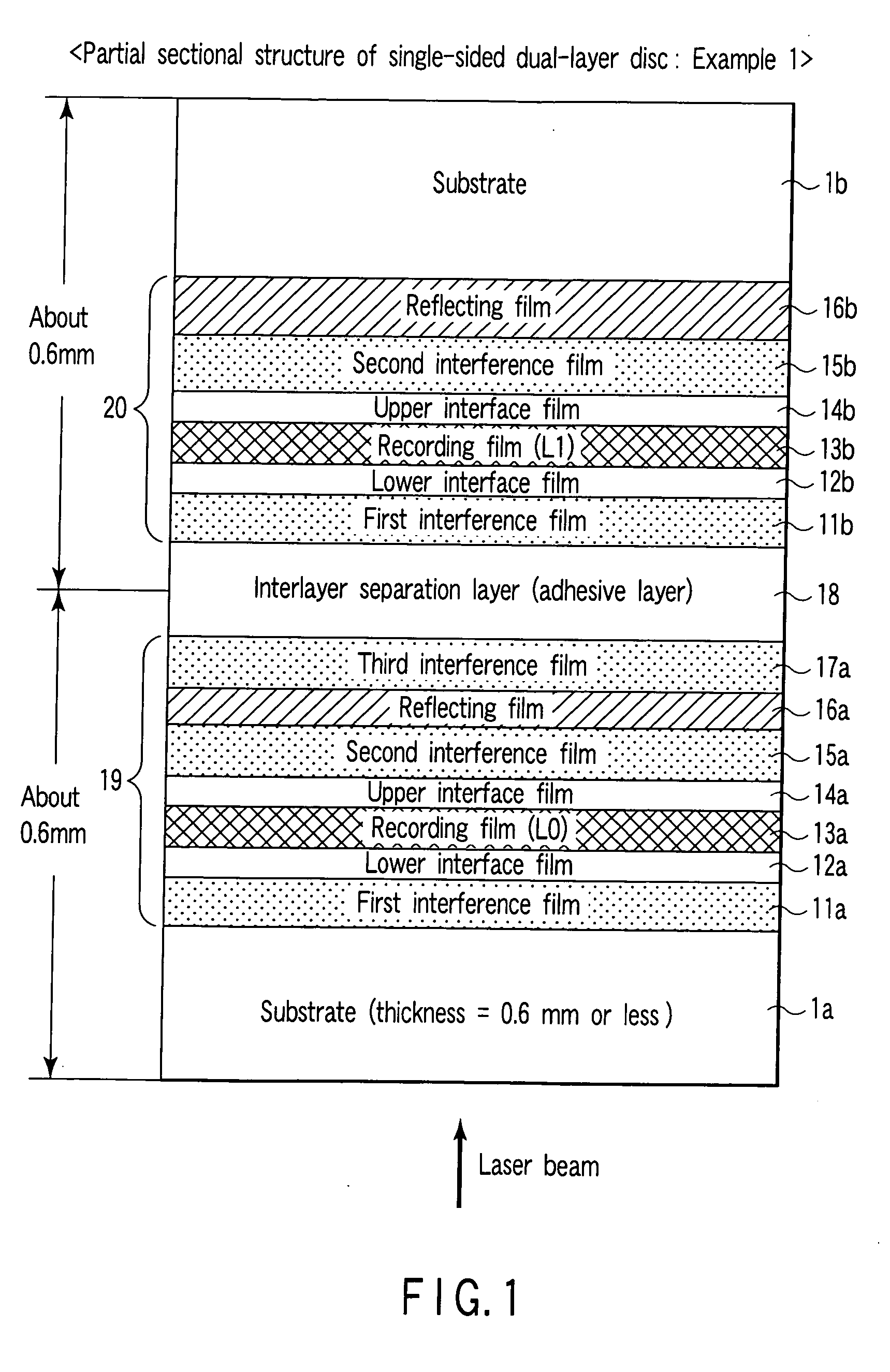Optical recording medium, and information recording/playback apparatus and method using the medium
a recording medium and information technology, applied in the field of recordable and/or erasable information recording mediums, can solve problems such as easy errors, deterioration of information on a certain track, and deterioration of the shape of the mark
- Summary
- Abstract
- Description
- Claims
- Application Information
AI Technical Summary
Benefits of technology
Problems solved by technology
Method used
Image
Examples
first embodiment
[First Embodiment]
[0111] Prior to a description of an embodiment of an optical recording medium manufactured by way of trial, the extinction coefficient of a thin film made of Zr (zirconium), O (oxygen), N (nitrogen), and one or both of Y (yttrium) and Nb (niobium) according to this embodiment will be explained in detail below. Several samples are manufactured by changing the composition ratio of the composition represented by (ZrO2−xNx)1−y((Y2O3)1−z(Nb2O5)z)y of a thin film made of Zr, O, N, and one or both of Y and Nb of this embodiment within the ranges of 0
[0112] More specifically, samples having compositions shown in FIG. 3 are manufactured and evaluated. FIG. 3 shows data obtained near a wavelength of 405 nm as the wavelength used by this optical recording medium. As indic...
third embodiment
[Third Embodiment]
[0140] Discs having the same arrangement as that of the second embodiment are formed by using, as interface layers, compositions which are made of Zr (zirconium), O (oxygen), N (nitrogen), and one or both of Y (yttrium) and Nb (niobium) (represented by (Zro2−xNx)1−y((Y2O3)1−z(Nb2O5)z)y, and had composition ratios shown in FIG. 4, and the same experiments as in the second embodiment are conducted. FIG. 9 shows the results. As shown in FIG. 9, the SbER of each sample is on the order of 10−5 for both lands and grooves, i.e., a practical error rate is obtained by each sample. The CNR for analog data is also as high as 52 dB or more for both lands and grooves. The OW count of each medium is 2,000 or more, i.e., a practical characteristic is obtained. In addition, no peeling is found in the film after the environmental test.
[0141] The criteria of total evaluation in the third embodiment shown in FIG. 9 are that the CNR is 52 dB or more, the SbER is 2×10−5 or less, the w...
fourth embodiment
[Fourth Embodiment]
[0142] As substrates, 0.59-mm thick polycarbonate (PC) substrates formed by injection molding are used. Since grooves are formed at a groove pitch of 0.68 μm, the track pitch is 0.34 μm when data is recorded on both lands (L) and grooves (G). In information layer L0 formed by using a sputtering apparatus close to the light incident side on the surface of this PC substrate in which the grooves are formed, ZnS:SiO2, an interface layer, a recording film layer, an interface layer, an Ag alloy, and an interface layer material are sequentially formed. In information layer L1 formed far from the light incident side, an Ag alloy, an interface layer, a recording film layer, an interface layer, and ZnS:SiO2 are sequentially stacked in this order from the PC substrate.
[0143] The same material as in the second embodiment is used as the recording film, and the film thickness of the recording film is 10 nm or less. A disc is formed by using, as an interface layer, a compositio...
PUM
| Property | Measurement | Unit |
|---|---|---|
| transmittance | aaaaa | aaaaa |
| thickness | aaaaa | aaaaa |
| total thickness | aaaaa | aaaaa |
Abstract
Description
Claims
Application Information
 Login to view more
Login to view more - R&D Engineer
- R&D Manager
- IP Professional
- Industry Leading Data Capabilities
- Powerful AI technology
- Patent DNA Extraction
Browse by: Latest US Patents, China's latest patents, Technical Efficacy Thesaurus, Application Domain, Technology Topic.
© 2024 PatSnap. All rights reserved.Legal|Privacy policy|Modern Slavery Act Transparency Statement|Sitemap



